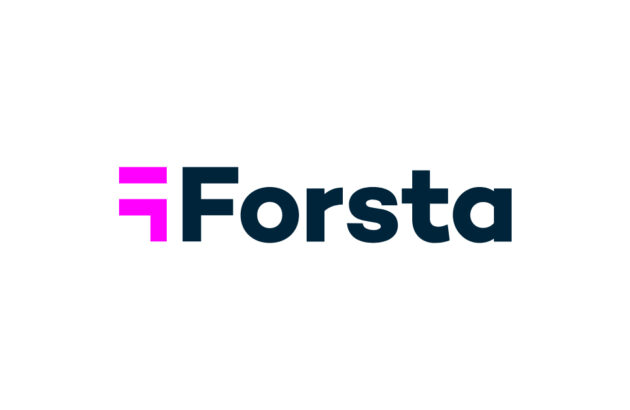Cultivating an innovative culture

We’re back from Web Summit 2022 and ready to share some of our key learnings from the world’s largest tech conference!
We were curious to hear what industry leaders Tom Fortin, Managing Partner & CIO, iCapital and Viviane Martins, CEO, Falconi had to say about building an innovation culture from the ground up. At their panel, they explored how to overcome organizational resistance to innovation, how to maintain an innovation culture even when the environment is challenging, and finally, how data can help you support your innovation culture.
So, we’ve taken what we heard and are sharing it with you.
Get curious about innovation
What does it mean to have an innovative culture? It’s a question that more and more business leaders are asking themselves as they search for new ways to remain competitive, relevant, and poised for success.
So, let’s get one thing straight: innovation is not the same as invention. Invention is about individual, brilliantly bright moments; innovation is about value creation, and in business terms, creating a data architecture capable of supporting a continuous flow of brilliant ideas.
But how do you instil innovation into the heart of an organization?
How to handle innovation resistance
People are creatures of habit, which means they tend to resist change. Leaders often face a huge challenge when starting on the path to innovation, as employees of all levels can be reticent – particularly in highly regulated organizations.
As companies grow, innovation can move further down the agenda. People get comfortable, and change becomes seemingly risky; this is especially true in large organisations that don’t reward risk. If you’re set on embracing innovation then, you need to let your people make mistakes. Encourage them to try new approaches, and don’t reprimand them if they fail.
As with most business initiatives, change must be led by the top by senior leadership, who make it clear that a fresh focus on innovation isn’t optional. But because no one likes to be forced to do things, change champions are crucial here: you need designated change leaders to act as spokespeople within your organization, capable of selling the vision, implementing change, and resolving any issues along the way.
Building the company around these people is how you ultimately establish an innovation culture. Because while leadership might be responsible for promoting innovation, a true innovation culture needs to find its roots at the bottom.
But with the challenge of running ‘business as usual’ operations, how do you support a culture of innovation at scale?
Facilitating innovation through support mechanisms
The right infrastructure and support mechanisms can set up the organization to share critical knowledge within their teams.
Much of the time, existing processes, routines and incentives act as hurdles to innovation, so it’s up to leaders to foster a genuine sense of collaboration across their teams.
When it comes to developing the infrastructure and support mechanisms to fuel innovation, leaders again play a critical role. It’s important to find your change champions, and pair them with technologists that understand the business. Technologists that only understand tech, but not the business, are only one piece of the puzzle. You need to have a solid business context to build trustworthy systems and relevant solutions.
But things don’t have to be perfect first time: set up an iterative approach, move with the versions you have, embrace your mistakes – and keep learning.
Innovating in the face of economic hardship
There’s no denying that our economic environment has changed, and that businesses (and their customers) are facing several challenges. But that doesn’t mean innovation should stop. Quite the contrary. Difficult economic times allow organizations to differentiate themselves. In fact, when things go wrong, the companies who run on a culture of innovation are far better placed to win market share and grow their business.
Your customers still have problems to be solved and needs to be met, and your employees still have goals to meet. Innovative companies are focused on solving their customers’ (and their employees’) problems.
But innovation isn’t only about developing new products or growing your business: it’s also about becoming more efficient and creating a competitive advantage by managing your costs and streamlining your operations. And one of the most effective ways of increasing efficiency is by drawing on data to bolster your innovation efforts.
Accelerating innovation with data
Consider the history of software: we are constantly building new blocks of information, and gathering untold amounts of data, but it can sometimes be difficult to make sense of. Companies need to be able to understand how the data they collect represents the people they’re targeting, and what their perspectives actually are. This allows organizations to innovate with truly personalized experiences.
Data and culture go hand in hand. Your culture is the sum total of all of the actions across all of your teams, and while you can always have a set mission and defined values, it’s actions that define your culture. Remember, your culture translates into your customer experience, so this is an important one to get right.
Where culture is the hypothesis, data is the hard information that should be informing your decisions. So instead of simply being ‘data informed’, switch to being ‘data driven’. How are people making decisions? How do they dissent and voice their opinions? Data helps you to find patterns and pinpoint user actions, but it’s culture that will help you to reimagine the application of that data.
Data is invaluable, but it doesn’t tell you the whole story: you need human interpretation on top, and that’s influenced by your culture. If you start with data first, you end up in a position where you’re simply optimising numbers.
Data should only ever be a tool to track the overall outcomes that your company chases, but these outcomes should always be determined by your culture.
Related stories
Research HX
Many feedback programs measure Net Promoter Score movements, but few can reveal the “why” of customer behavior. Forsta’s HX Benchmarks puts performance in context so you can understand what great experiences look like for your customers. Learn more about the human-centered intelligence you need to outperform the market.

AI and the new era of customer experience: Insights for 2025 and beyond
AI and the new era of customer experience: Insights for 2025 and beyond Webinar synopsis: In today’s fast-paced digital landscape, customer experience (CX) is the ultimate differentiator—and AI is rewriting the playbook for how businesses connect with their customers. Tune in to an engaging session that blends cutting-edge thought leadership with actionable strategies to elevate […]

Integration: the new frontier of insights for research HX
Integration: the new frontier of insights for research HX Webinar synopsis: Discover the faster, smarter and more accurate way to research with Research HX. Gone are the days of sequential processes skipping between platforms. Parallel workflows, integrated steps and AI enhancements to the tools you use daily. Related resources

Learn more about our industry leading platform
FORSTA NEWSLETTER
Get industry insights that matter,
delivered direct to your inbox
We collect this information to send you free content, offers, and product updates. Visit our recently updated privacy policy for details on how we protect and manage your submitted data.